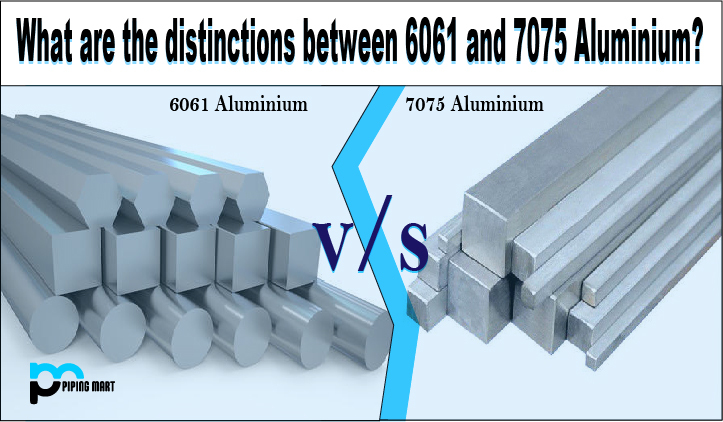Aluminium has always been popular due to its ease of manufacture, resilience and corrosion-resistant. Aluminium weighs roughly a third the weight of steel and has excellent mechanical properties, it comes in different grades, and each grade has unique features. Aluminium 6061 and 7075 are the most common grades of aluminium. Both compounds, however, have distinct characteristics that distinguish each other.
What is 6061 Aluminum?
Aluminium 6061 is one of the most versatile heat-treatable alloys of aluminium. This aluminium grade is originally called “Alloy 61S”. The Aluminium 6061 is made up 95.8 to 98.6% aluminium, with 0.8 to 1.2% magnesium, and 0.4 to 0.8% Silicon. It also includes a variety of traces of elements, including copper, chromium, etc. This alloy is one of the most used aluminium grades because it has a wide variety of mechanical characteristics and corrosion resistance. The 6061 Aluminium has outstanding formability and can be easily processed, marketed using all methods, including brazing furnaces. These types of Aluminium round bars, pipes and tubes are most popular products in various applications
What is Aluminum 7075?
The 7075 is the finest aluminium alloy with an impressive weight-to-force ratio. It features an impressive array of mechanical characteristics and tremendous fatigue strength and flexibility. Its excellent properties are useful widely for highly stressed applications and structural parts of aircraft.
7075 aluminium alloy contains 5.6 to 6.1% zinc, 2.1 to 2.5% magnesium, and 1.2 to 1.6% copper. Silicon, manganese, chromium, titanium, iron, and more are other elements in its compositions. Besides, the aluminium alloy 7075 comes from the 7xxx series of aluminium alloy.
Difference Between Aluminum 6061 and Aluminum 7075
6061 Aluminium and 7075 Aluminium have excellent properties. Significant variations include alloy types, chemical elements, mechanical features and applications.
While the alloys of 6061 and 7075 are comparable, the exact number of alloy agents for each composition varies considerably. Magnesium, silicon, iron, copper, zinc, titane, manganese and chromium are found in the 6061-aluminium material. The 7075 aluminium composition uses the same alloys. Nevertheless, the sequence varies in magnesium, silicon, iron, copper, zinc, titanium, manganese, chromium, and other metals.
What are the fundamental properties differentiate?
The 6061 aluminium properties include corrosion, weldability, medium to high strength and robust functionality. The 7075 aluminium properties are stable, stress-resistant, and workable and have improved stress resistance.
For mechanical property comparison, various factors are useful to differentiate the 6061 aluminium from the 7075 aluminium. These factors include Yield Strength, Elasticity, Thermal Conductivity, Electrical Resistivity, Material Hardness and Machinability.
6061 Vs 7075 Aluminium: Common Applications
There is much application overlap between the 6061 and 7075 aluminium alloys. Both are structural grades of aluminium, as stated previously. Both of these components are useful for automotive, aerospace and construction work. For instance, 7075 may be more susceptible to aeronautical industries as equipment or rod, and 6061 may be more likely to be used in an area that needs bike parts, with the 7075-aluminium alloy increased by some riders. 7075 is more likely than in 6061 to be used for moulds and materials. Aluminium 6061 shaped more than Aluminium 7075, and other types with rounded contours are used more frequently than others.

Pipingmart is B2B portal specializes in industrial, metal and piping products. Also, share latest information and news related to products, materials and different types grades to help business dealing in this industry.




